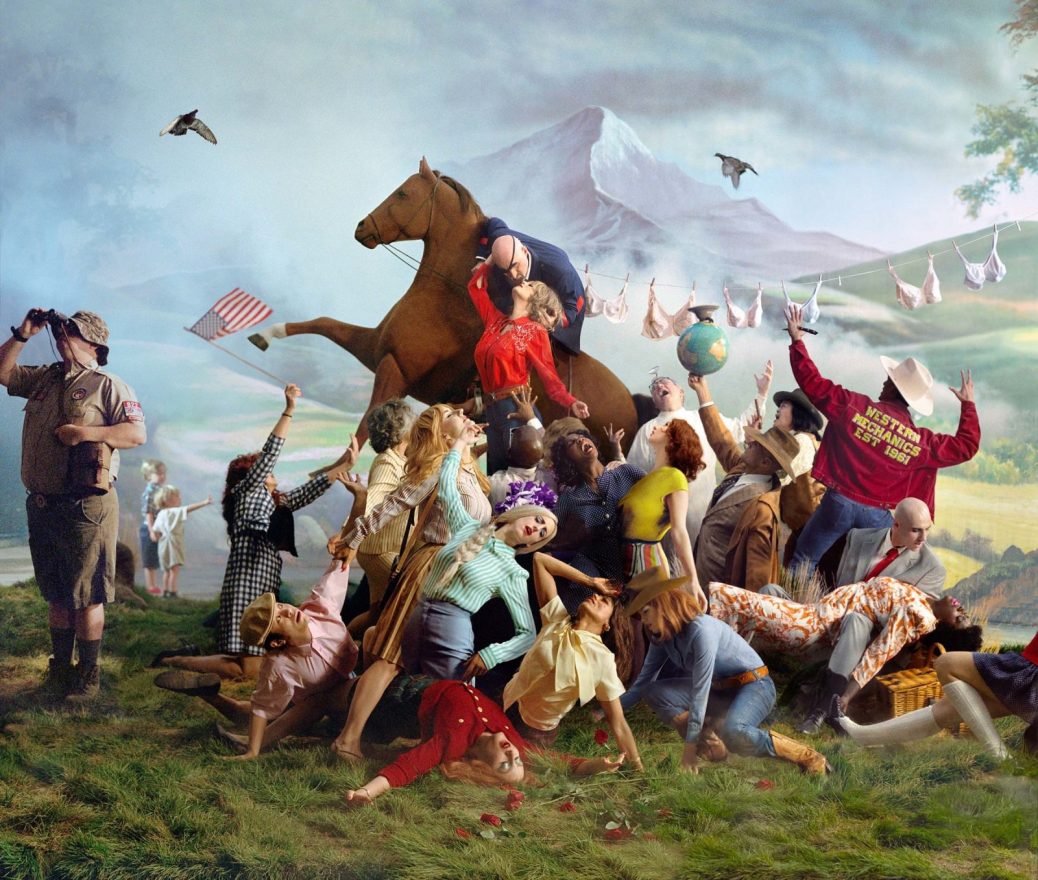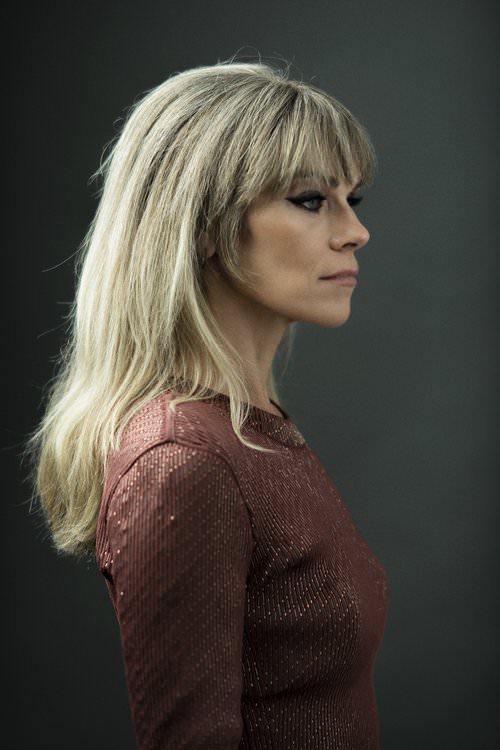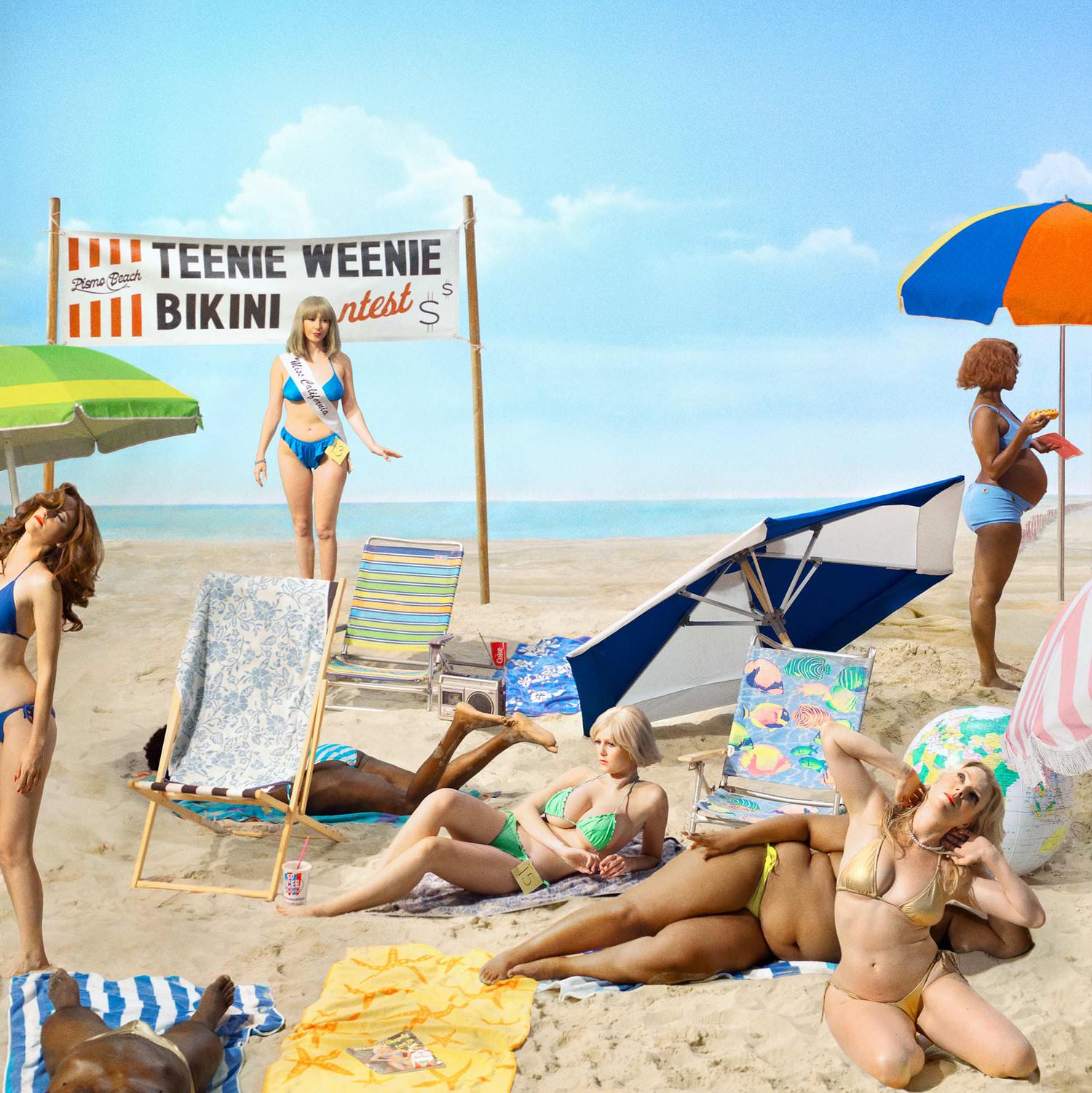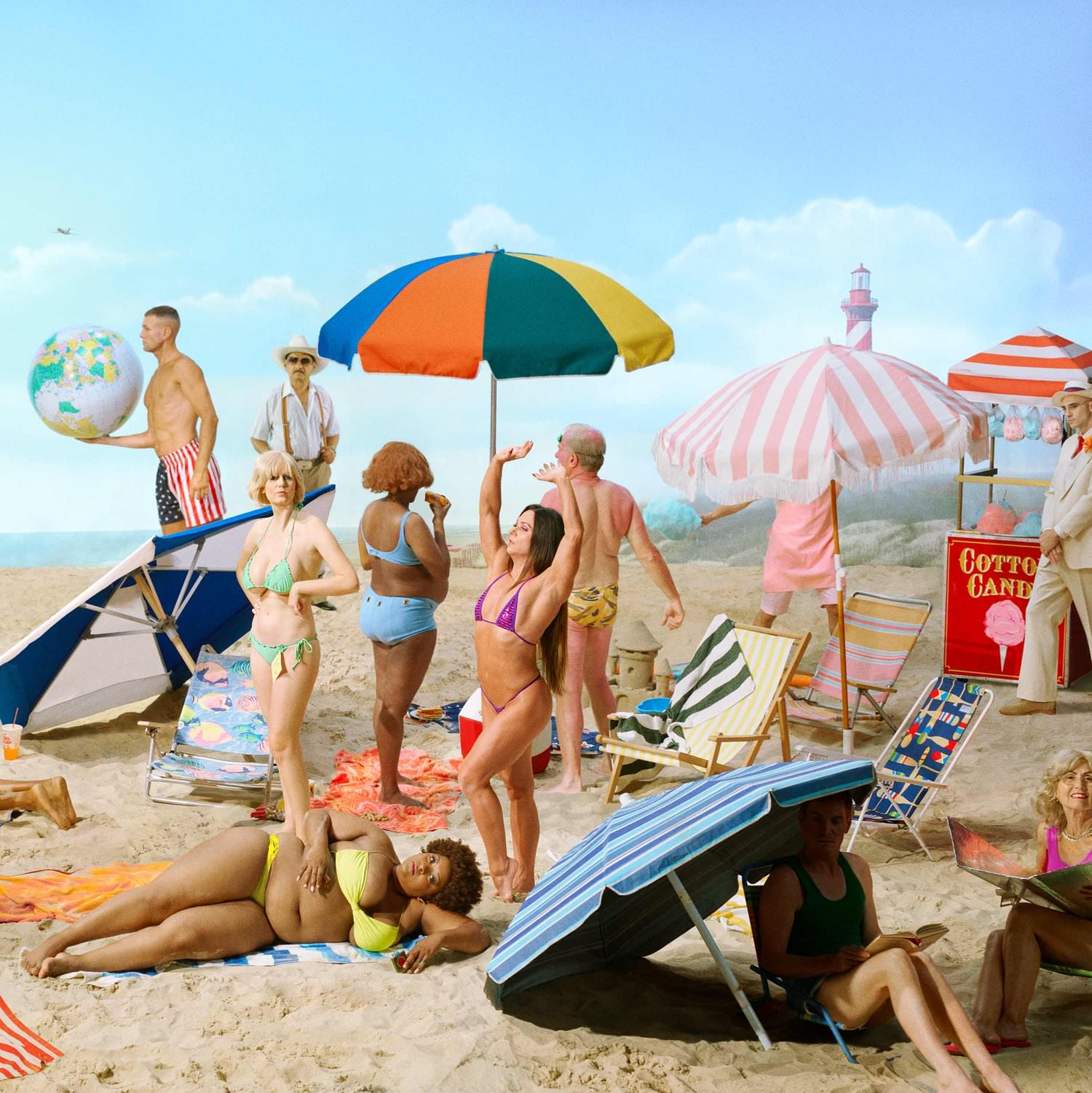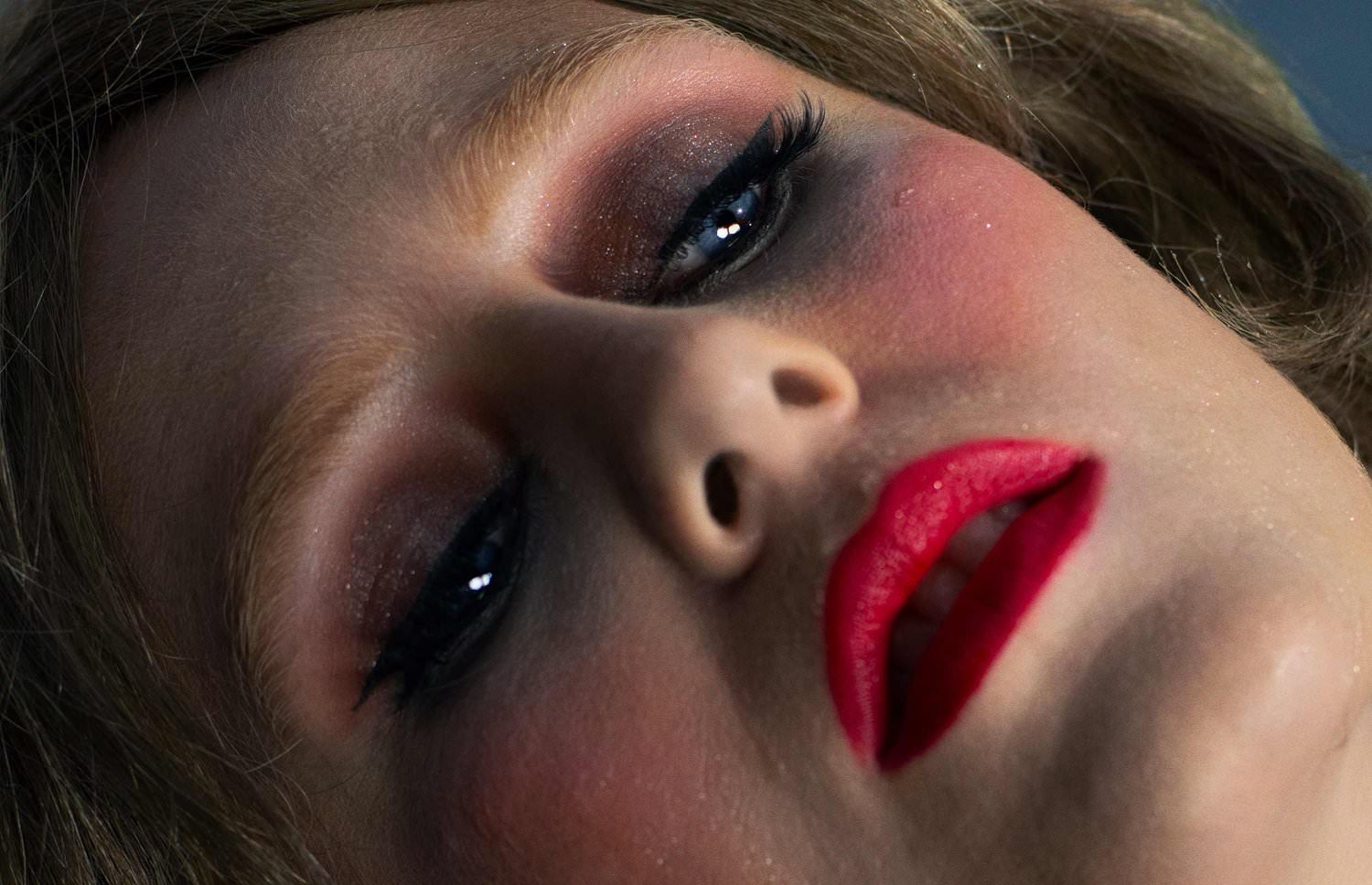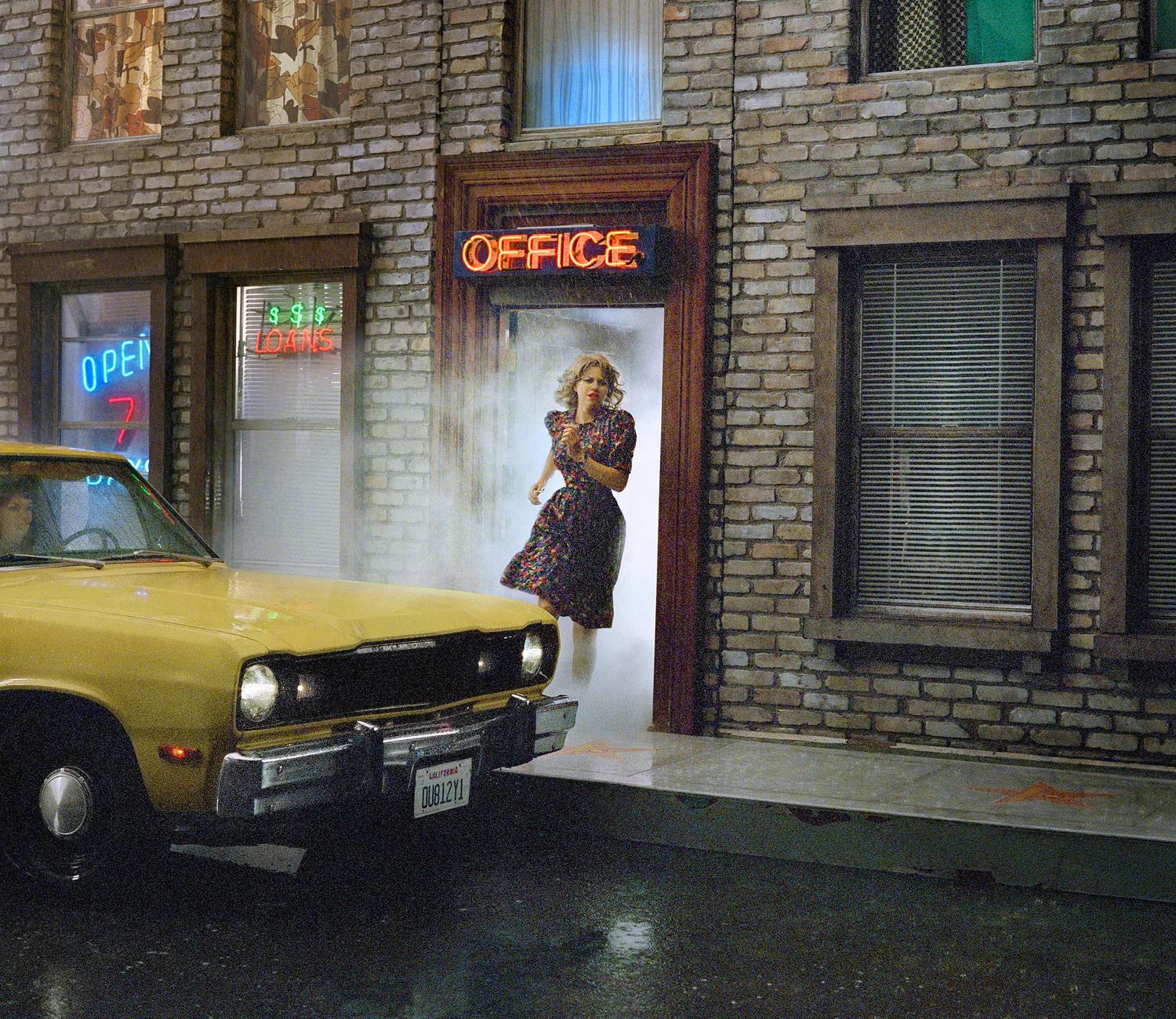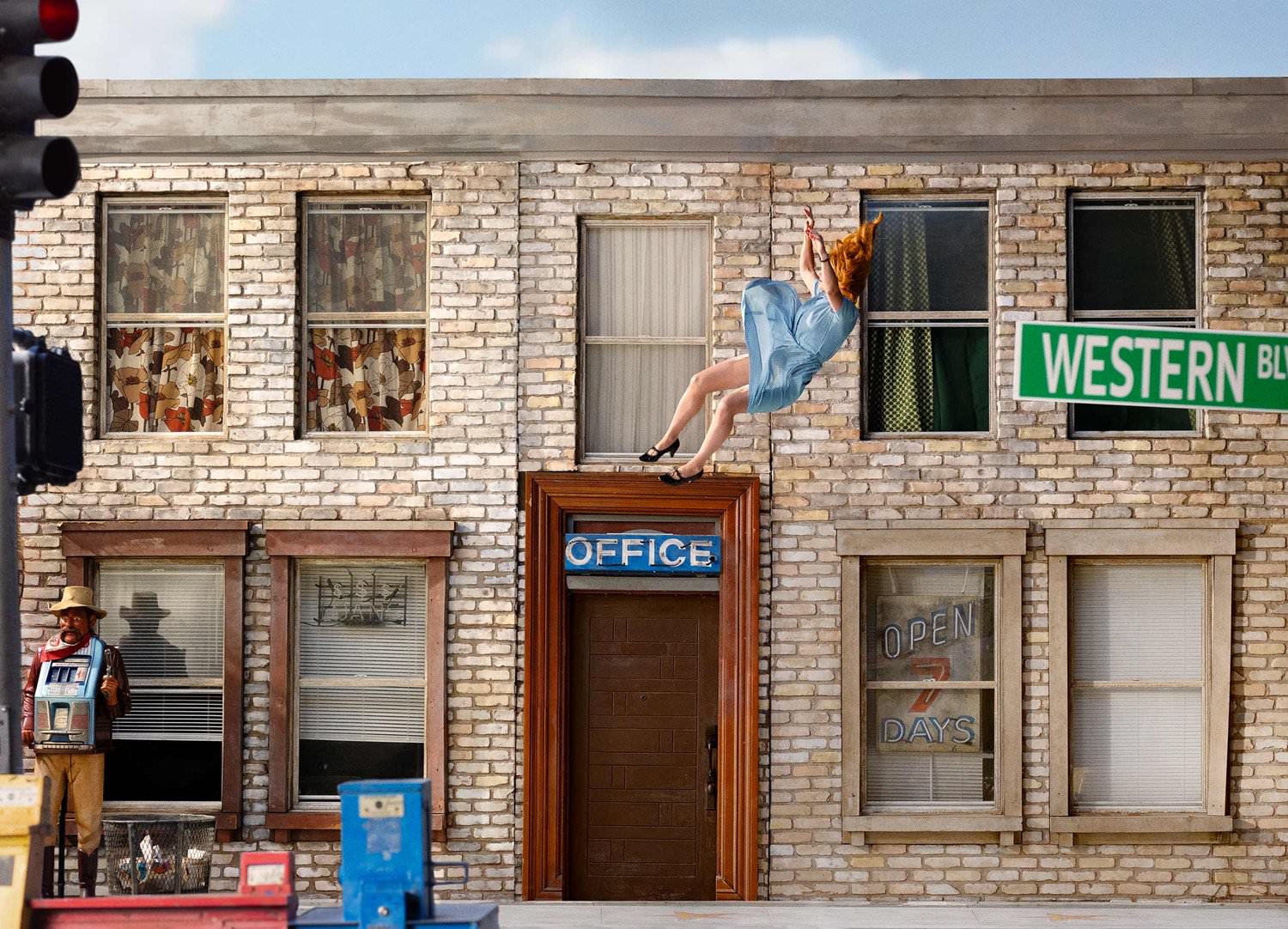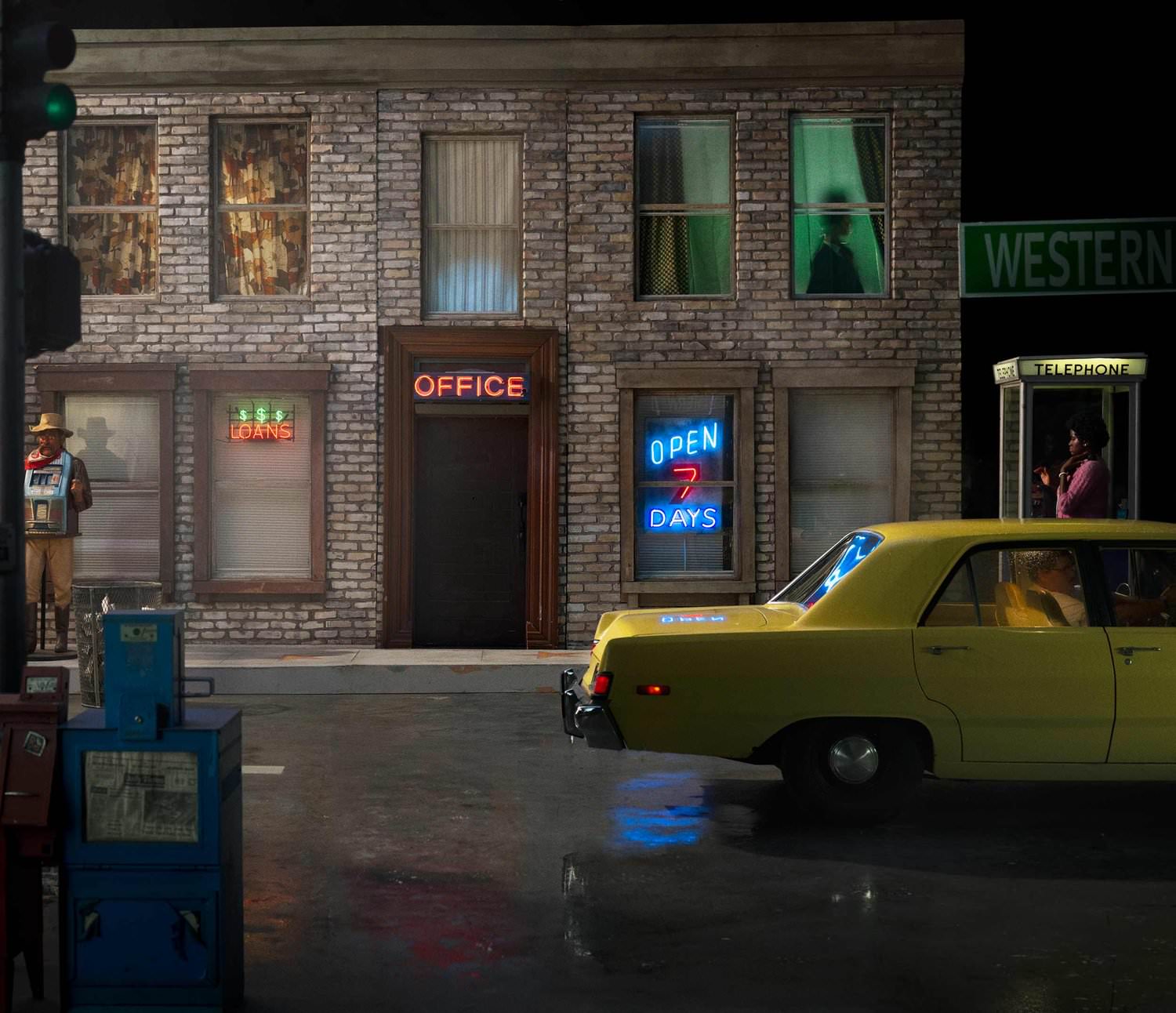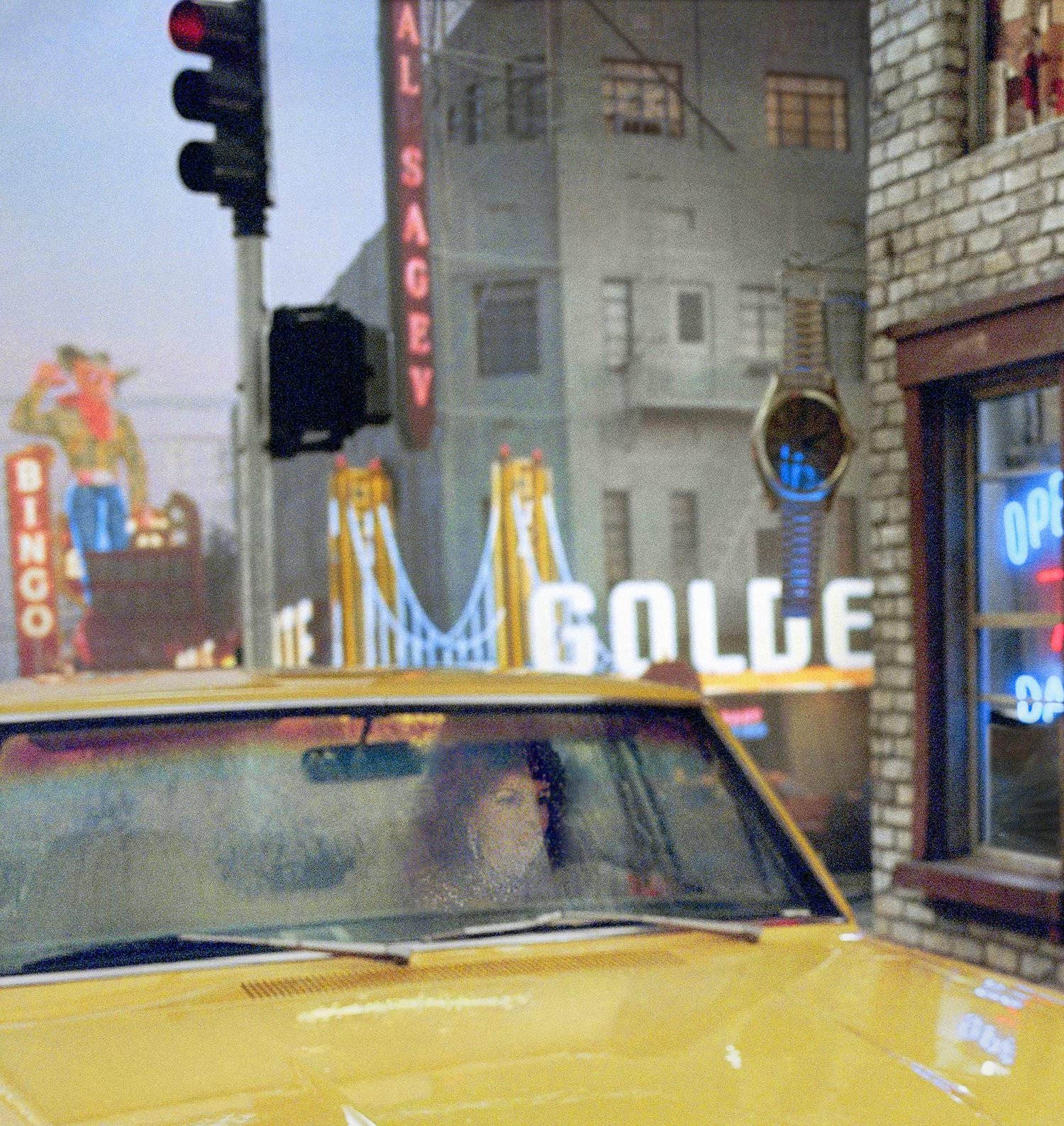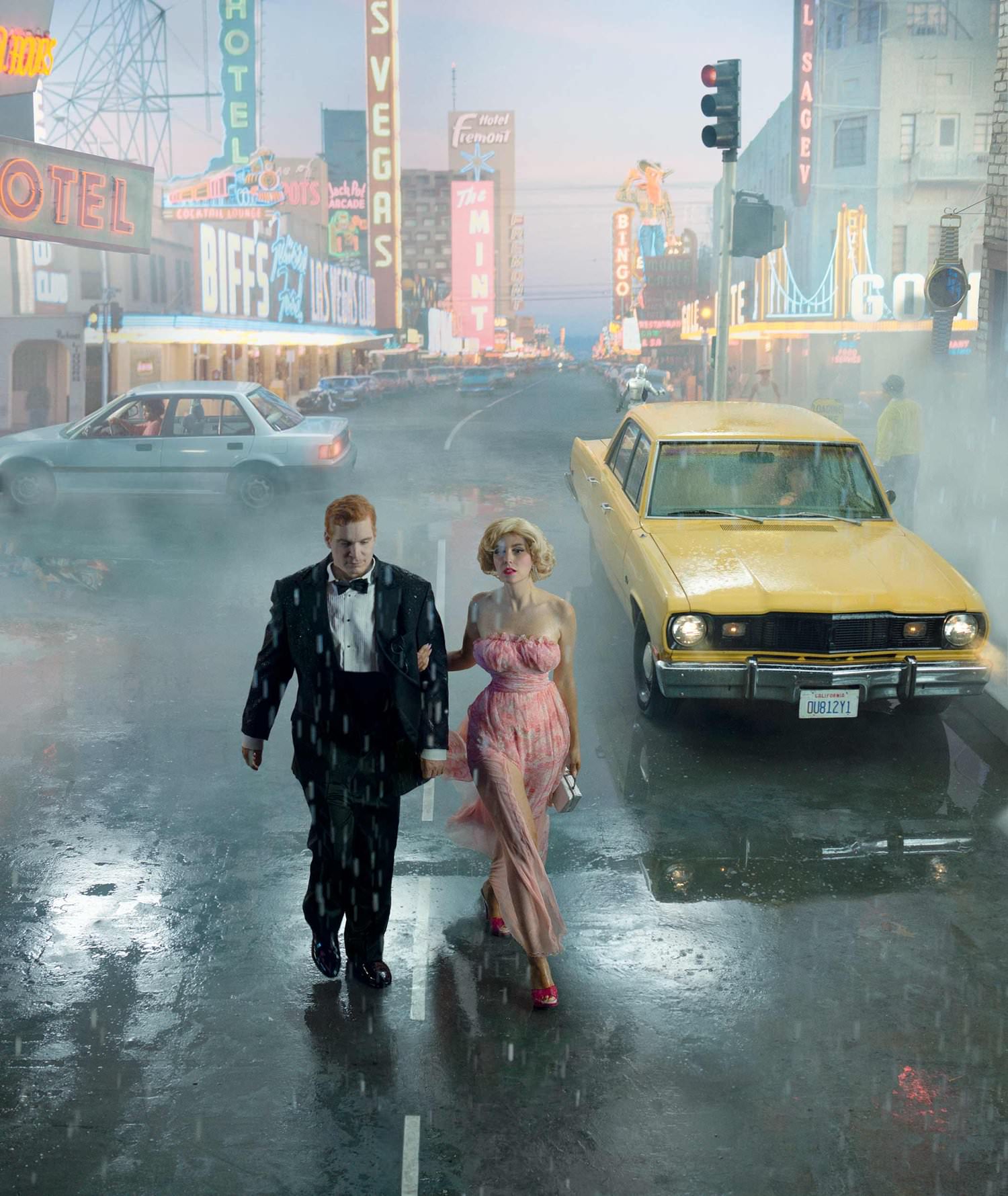Alex Prager. Western Mechanics
Lehmann Maupin is delighted to present Western Mechanics, Alex Prager’s inaugural exhibition with the gallery in Seoul and her 8th solo show with Lehmann Maupin, until june 22. This exhibition showcases a new series of photographic works that abandon linear storytelling in favor of emotionally intense vignettes. Prager’s photos, rich in cultural references and historical allegories, provide numerous points of entry into evocative and imaginative worlds. Her vibrant frames explore the human condition and contemporary experience by delving into liminal spaces. Prager developed Western Mechanics alongside her first feature film, DreamQuil, which examines the rise of technology and the decline of natural order. Concurrently, Prager’s installation Play the Wind (2019) is displayed on the exterior of Hyundai Card’s Music Library in Seoul, remaining on view until 2025. Additionally, Prager was recently commissioned by LAX to create a short film for the airport’s electric train system, debuting in 2025.
Working across film, photography, and sculpture, Prager creates highly emotional moments that feel like fabricated memories or dreams. Her distinctive use of archetypes, everyday objects, humor, and allegory—paired with her signature technicolor facades—enables her to explore dark and complex themes. Central to her work are existential concerns, including collective and individual identities and the impact of technology on society. Similar to the psychological works of artists like Edward Hopper, August Sanders, and Bill Viola, Prager’s work invites viewers to contemplate the human experience, revealing the extraordinary within the ordinary.
Throughout the exhibition, her photographs blend theatrical composition and cultural archetypes to produce emotional narratives that cross the boundaries of mythology and folklore, history and future. Exploring the threshold between states, Prager’s compositions contemplate themes of transformation and uncertainty, transcending temporal constraints. The passage of time and the endurance of memory generate tension within and between the works in Western Mechanics. As each composition reflects on the world in its often-dissonant present, Prager keenly identifies moments where our emotional ties to contemporary life are intertwined with the past. For Prager, examining the present through the lens of the past offers a fresh perspective on contemporary discourse, with a hopeful eye towards the future. These vignettes showcase the malleability of time by collapsing the past and present, underscoring the non-linear nature of the human experience.
Each image in the exhibition conveys this metanarrative, often illustrated through recurring motifs such as a falling woman or a moment frozen in time. In Hollywood (Day) (2024), a woman falls from the sky—a dramatic movement captured in stillness. This moment of suspense leaves the composition open to interpretation, reflecting the fragmentary yet enduring nature of memory. These varied degrees of suspension—emotional, psychological, and physical—highlight the sense of unpredictability present across the body of work.
Liminality and historical memory converge in Prager’s titular Western Mechanics (2024). Evoking the traditional genre of history painting, Western Mechanics resembles a tableau vivant, depicting human bodies entangled in a dynamic composition similar to Théodore Géricault’s The Raft of the Medusa (1818—19) or Eugene Delacroix’s Liberty Leading the People (1830). In a chaotic yet meticulously organized frame, a mound of intertwined figures—some yelling, some fainting, and two kissing—is set against an Americana-inflected backdrop of horse, mountain, and sky. Prager includes symbolic yet mundane objects throughout the composition, such as the American flag, a globe, and women’s undergarments, blending the dramatic scene with the familiar visual language of everyday life. Western Mechanics captures a tumultuous blend of emotions against an ironic sense of calm, which stems from the composition’s triangular framework. The intertwined figures are positioned in an intentionally geometric structure, evoking a sense of order within chaos. This staged disorder, both intense and serene, gestures towards the contradictions inherent in contemporary existence. Echoing Friedrich Nietzsche’s notion “we have art in order to not die of the truth,” Prager’s careful composition acts as a symbolic window into our present, alluding to the heightened sense of dysfunction, control, and hope in the modern world.
Navigating reality and artifice, Prager’s newest body of work questions the very foundation of contemporary society, leaving viewers in a perpetual state of transition. Each photograph, with its carefully staged compositions, becomes a candid reflection of our liminal present—and in turn, offers endless possibilities for our future.
About the Author
Alex Prager (b. 1979, Los Angeles, California) is an American artist, director, and screenwriter based in Los Angeles. Known for her unique style that merges artifice and reality, Prager’s work spans film, photography, and sculpture. Drawing inspiration from golden-era filmmaking techniques, classical mythology, and Dutch Renaissance painters, her large-scale productions create emotionally charged, dreamlike moments. Her work explores existential themes, including identity and the impact of technology on society, and invites viewers to find the extraordinary within the ordinary.Prager’s oeuvre includes 10 short films with classically influenced scores. Her film “Despair” was featured in MoMA’s “New Photography 2010,” marking a career milestone. In 2013, her solo museum exhibition “Face in the Crowd” debuted at the Corcoran Gallery of Art in Washington D.C., and the film was later showcased at MoMA and Lincoln Center. Her autobiographical project, “Play the Wind,” was exhibited in 2019, and her latest short film, “Run,” premiered at the Santa Barbara Film Festival and was nominated for the 2023 SXSW Grand Jury Award. She is currently developing her debut feature film, “DreamQuil.” Prager’s work has been exhibited globally, including at the Museum of Modern Art, New York; the Corcoran Gallery of Art, Washington, D.C.; and the Los Angeles County Museum of Art. Her pieces are held in prestigious collections such as the Whitney Museum of American Art and MoMA. She has received numerous awards, including the FOAM Paul Huf Award and an Emmy for her short film series “Touch of Evil.” Her latest public commission is a large-scale installation at the Hyundai Card Music Library in Seoul (2020-2025).
Alex Prager. Western Mechanics
until June 22, 2024
Lehmann Maupin – Seoul – Korea
More info:

